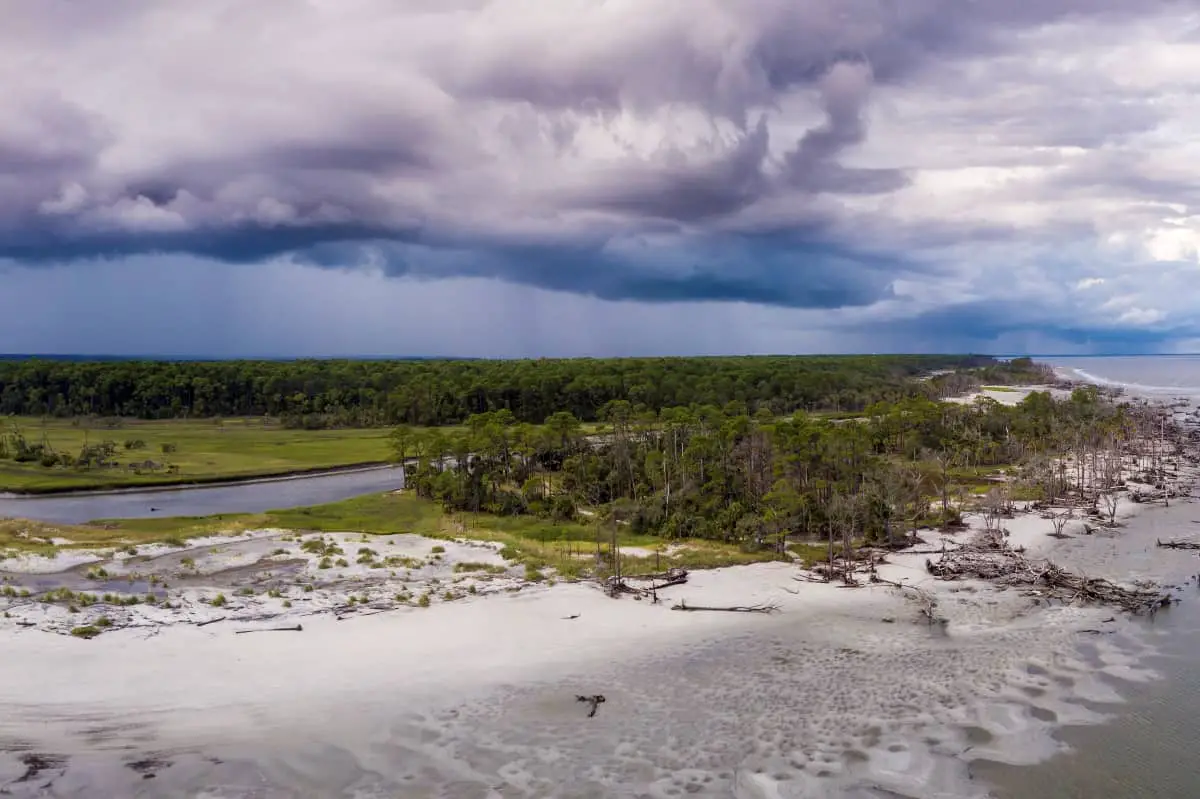Yuccas love sandy soil and warm weather, making South Carolina a great place to grow yuccas. There are a few yuccas that are native to South Carolina, like Spanish Bayonet.
Adam’s Needle, Spanish Bayonet and Bear Grass are the best yuccas to grow in South Carolina. Native to the southwest, these yuccas thrive in South Carolina sunlight since yuccas need an extraordinary amount of sunlight. South Carolina also provides excellent soil for yuccas in certain areas.
There are many pros and cons to growing yuccas in South Carolina. This article will explain why these yuccas are the best to grow in South Carolina and the threats these yuccas may face.
Yuccas Grow Best in the Zone
With Yuccas growing best in agriculture zones seven through nine, the South Carolina agriculture growth zones are perfect for yuccas. Especially with the sandy soil found in many places of the Lowcountry. Like bear grass and Adam’s Needle, wild yuccas are often found in the sandy dunes by the ocean. But they will grow in pots away from the Lowcountry, the southeast part of South Carolina.
These native yuccas, Spanish Bayonet, Adam’s Needle, and Bear Grass have thrived in South Carolina for thousands of years. The yucca has evolved to survive with little water. As a result of growing on the east coast, yuccas have grown tolerant to salt sprays. The abundant sunlight makes South Carolina a great place to grow yucca.
Yuccas need little water from people in South Carolina, as South Carolina provides the required water through rain and humidity. Although watering a yucca every week or two, depending on the yucca’s needs, will give the plant a healthier look.
As desert dwelling plants, these yuccas will need protection in freezing temperatures for long periods. However, a light frost and freezing weather for a few days will not kill the yuccas as the yucca will stop storing water in the leaves to keep from freezing. Despite the few days of freezing temperatures each year, Bear Grass, Adam’s Needle and Spanish Bayonet will survive with little damage.
Hey, you’ll like this one too: What Soil is Best for Yucca
Bear Grass (Yucca Smalliana)
Bear Grass was first discovered by Native Americans, who used the leaves to create baskets and clothes. In 1806, a U.S. military expedition led by Captain Meriwether Lewis and Lieutenant Willam Clark found and named the yucca bear grass. The name beargrass most likely came from a miss identification of a beargrass plant that resembles this yucca. Beargrass is a green plant all year long that grows up to four feet tall and blooms annually.
Adam’s Needle (Yucca Filamentosa)
Named after the long sharp leaves that have thread-like fibers growing, Adam’s Needle is often used for landscaping. These small yuccas look fantastic in gardens. They grow up to eight feet and bloom creamy white flowers from June to July each year when they mature. Adam’s Needle also has many survivalist uses used by Native Americans, like soap and basket making. Native Americans, specifically the Catawba, Cherokee, and Nanticoke had many uses for this yucca, like treating skin diseases and inducing sleep.
Spanish Bayonet (Yucca Aloifolia)
Growing up to 15 feet tall and eight feet wide, these sharp-leaved plants are fierce with mildly toxic sap that makes a great defense. Spanish Colonists used this yucca along defensive lines around St. Augustine, where this yucca gained the name Spanish Bayonet.
These impressive yuccas often fall over due to their weight but continue to grow new stems upward. These stems will produce white flowers with a hint of purple from July to August every year when the yucca is mature.
Damaging Soil in South Carolina
Yuccas need well-drained soil to grow. Unfortunately, northern parts of South Carolina soil are often too moist for yucca. Well-draining soil is essential to prevent yucca roots from becoming waterlogged and growing fungus that will kill the plant; root rot. This quickly happens when South Carolina receives heavy rainfall. Well-drained pots with sandy soil are key to preventing over-watering.
To prevent moisture retention, horticultural sand or perlite is mixed with the soil before planting. This helps with drainage. This type of soil mimics what is found in the wild.
Harmful Weather in Northern South Carolina
Colder portions of South Carolina will cause yuccas to stop storing water to prevent their leaves from freezing, which will kill the plant from lack of water. However, if the cold is properly prevented from freezing the plant during a hard freeze, the yucca will live for a week or two in a hard freeze.
Preventing a yucca from freezing is done by placing a cloth sheet or blanket over the plant. Plastic is often used to protect plants from freezing on top of the cloth sheet or blanket, but plastic should never touch the yucca as plastic will gather moisture and increase the chances of freezing the yucca.
Harmful Pest in South Carolina
South Carolina has pests that may eat or harm the yucca, like mealybugs and aphids. Removing these pests is vital for yucca and is done differently depending on the pest. Aphids and similar bugs like ants can be sprayed away with a hose. Mealybugs will need to be removed by hand.
Hey, you’ll like this one too: What are the Bugs on My Yucca
Conclusion
South Carolina’s sunny days and sandy soil make an excellent place for yuccas. Yuccas love the sandy soil, sunny weather and little rain the Lowcountry offers, especially Spanish dagger, Spanish bayonet and Bear grass. Adam’s Needle and curve-leaf yuccas enjoy the southeast part of South Carolina, but yuccas will thrive in the northern regions with the proper care.

